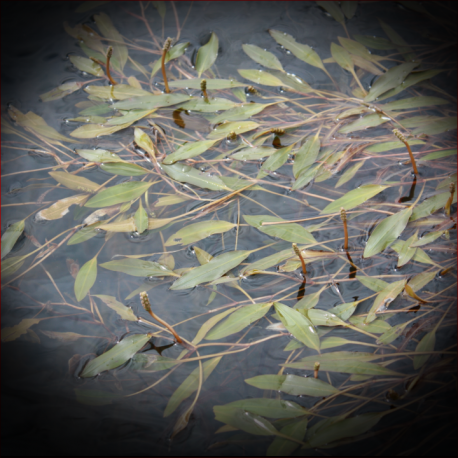More info
Datasheet
| Aquarium Compatible | yes |
| Plant Outdoor | unknown |
| Plant Emersed Growth | no |
| Temperature Tolerance | 18°C / 64.40°F - 28°C / 82.40°F |
| Temperature | 20°C / 68.00°F - 26°C / 78.80°F |
| Carbonate Hardness | 2-21 kh |
| pH Value | 6-9 ph |
| Light | medium-high |
| Carbon Dioxide (CO2) | 5-40mg/lmg/l |
| Nitrate (NO3-) | 10-50mg/lmg/l |
| Phosphate (PO43-) | 0.1-3mg/lmg/l |
| Potassium (K+) | 5-30mg/lmg/l |
| Iron (Fe) | 0.01-0.5mg/lmg/l |
General Description
Potamogeton schweinfurthii, also known as Potamogeton lucens Baker, is a species of aquatic plant belonging to the family Potamogetonaceae. It falls under the order Alismatales and the major group of seed plants known as flowering plants (Angiosperms). This plant is native to various regions, including the lakes of Malawi and Tanganyika.
Aquarium Suitability
Potamogeton schweinfurthii is considered suitable for aquariums, although it is rarely available commercially. Its ease of care categorizes it as an easy plant to maintain in aquatic setups. For specific details on its demands and hardiness, refer to the provided table.
Demands and Hardiness
Potamogeton schweinfurthii thrives in aquariums with medium to high lighting and a temperature range of 20-26°C. It requires carbon dioxide levels between 5-40mg/l and a pH range of 6-9. The plant can tolerate temperatures between 18-28°C and a hardness level of 2-21 dKH. Detailed water parameter requirements and other considerations are outlined in the accompanying table.
Aquascaping & Usage
In aquariums, Potamogeton schweinfurthii is often used as a background plant due to its tall growth habit. It contributes to creating a natural-looking aquatic environment and can be utilized for aquascaping purposes.
Propagation
Propagation of Potamogeton schweinfurthii can be achieved through the use of runners or cuttings. This method allows for the plant to reproduce and expand within the aquarium setting.
Habitat and Distribution
In its natural habitat, Potamogeton schweinfurthii can be found in various bodies of water, including the lakes of Malawi and Tanganyika. The plant's distribution is not confined to a single region, showcasing its adaptability to different water conditions and environments.

